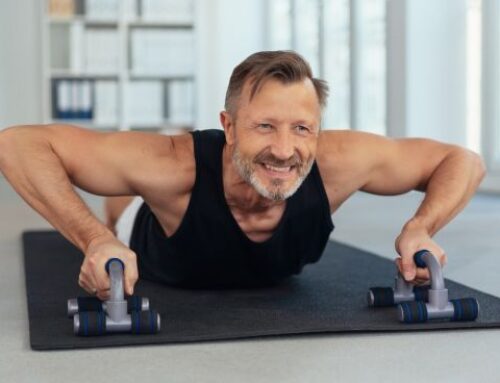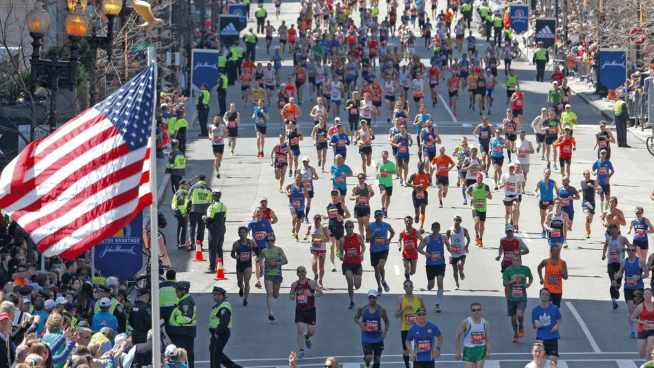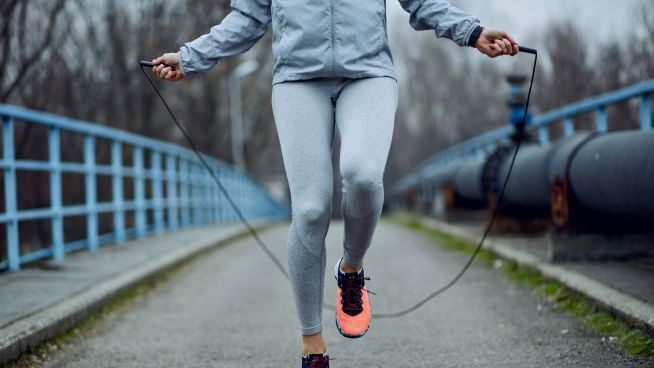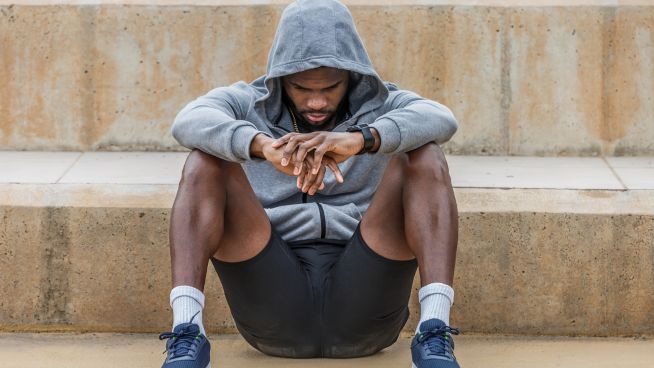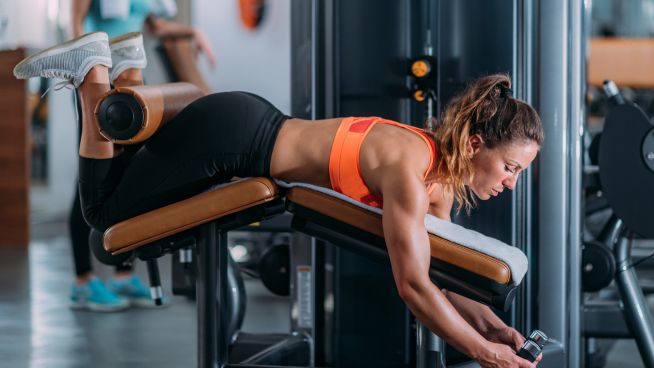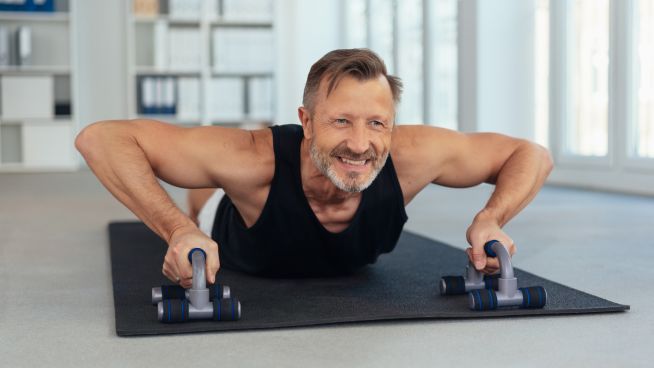Why High School Athletes Should Add Aerobic Training to Their Routine
Imagine your body’s energy system as a car with cruise control. You set the speed—50, 60, or 70 miles per hour—and that’s your aerobic system cruising along. Aerobic training is how you crank that speed up. The higher you set it, the faster and more efficient your body becomes. When it’s time to sprint, it’s like slamming the gas pedal—you surge past that cruise speed with a burst of power. Let off the pedal, and you settle back to that steady pace.
But if you don’t train it, that cruise speed slows to a crawl. You get sluggish and heavy, and it messes with everything—your speed, your explosiveness, your whole game.
Aerobic training is the backbone of your energy system. Even when you’re sprinting or jumping, it’s what resets you afterward, keeping you ready for the next move. Skip it, and you’re stuck in low gear when it matters most.
If you’re a high school athlete, you’re already grinding—practices, games, lifting sessions, the works. But here’s the thing: adding aerobic training to your routine isn’t just extra work—it’s the key to unlocking your full potential. Whether you’re tearing up the soccer field, dominating the basketball court, or pinning opponents in wrestling, this is how you get the edge.
What’s Aerobic Training Anyway?
Aerobic training is any exercise that keeps your heart pumping and lungs working for a stretch of time. Think steady running, swimming, biking, or even jumping rope. It’s not the quick bursts of a sprint or a max lift—it’s about building endurance and keeping your engine strong when others are running on fumes. For you, it’s like tuning that cruise control to a higher speed so your baseline is fast and steady, ready for anything.
The Purpose: Why It’s a Game-Changer
You might be wondering, “I’m already fast and strong—why do I need this?” Because sports aren’t just about one big play—they’re about staying in it, moment after moment. Aerobic training builds the stamina to outlast everyone else. It’s the difference between fading in the clutch and still having gas to dominate. Plus, it speeds up your recovery after those explosive efforts—like resetting your cruise control to a solid pace. Without it, you’re slow and sloppy, and that drags down your speed and power. Aerobic is your energy foundation, supporting every sprint, jump, and push you make.
Think of it this way: every time you go all-out, your body dips into overdrive. Aerobic training ensures you’ve got a strong base to fall back on. It’s what keeps you from crashing when the games on the line.
Boosting Performance: How It Works
Here’s how aerobic training turns you into a better athlete. It’s not just about logging miles—it’s about playing smarter, stronger, and longer.
1. Last Longer in the Game
Some players shine early but fade late. Aerobic training keeps you in it. It’s like setting your cruise control to 70 instead of 50—you’ve got more juice when the clock’s ticking down. Picture a tied football game in the fourth quarter. Everyone’s beat, but you’re still hitting gaps like it’s the first snap. That’s your advantage. If your aerobic system is not optimized, neither will your power nor explosive ability.
Think about it. Remember a time when you were exhausted, and you had no more gas in the tank? That is your aerobic system out of fuel, affecting your power across all systems. If there is no gas, flooring the gas pedal won’t work.
2. Recover Like a Pro
Sports are stop-and-go—sprint, rest, sprint again. Aerobic training cuts the downtime between those bursts. It’s like your engine cooling off fast after a hard run. In soccer, you’re back chasing the ball without gasping. In wrestling, you’re fresh for the third period when your opponent’s toast. Quick resets mean you stay on top.
3. Power Up Your Energy
Your muscles need oxygen and fuel to fire. Aerobic training makes your body deliver both better. It’s like upgrading your gas tank for a higher cruise speed. That extra energy powers a sharper cut in basketball or a faster break in track. You’re not just surviving—you’re owning it.
4. Stay Fresh and Focused
Fatigue isn’t just physical—it’s mental. When you’re wiped, reactions slow, and mistakes pile up. Aerobic training keeps your brain sharp by keeping oxygen flowing. Late in a volleyball match, you’re still diving for every ball while the other team’s off. That’s toughness fueled by fitness.
5. Build Explosive Edge
Here’s a bonus: a strong aerobic base makes your sprints and jumps pop more. When your cruise speed is high, hitting the gas feels smoother and stronger. A baseball player stealing bases or a hurdler clearing obstacles—you’ll notice the difference when you’re not starting from zero.
How to Fit It Into Your Routine
You’ve got a packed schedule—school, practice, homework, repeat. So, how do you squeeze this in? Keep it simple and fun. You don’t need hours—just 20 to 30 minutes, three or four times a week. Here’s how to make it happen:
- Run or Jog: Hit the track or a park. Start with 30 minutes. To mimic your sport, toss in sprints. Interval training for 40 minutes is perfect!
- Bike or Swim: Low-impact options that still build endurance if you’ve got access.
- Team Drills: Ask your coach for conditioning—shuttle runs, laps, anything that gets you moving.
- Off Days: Use a rest day for light work. Jump rope or take a brisk walk—it’s easy but adds up.
Start slow if it’s new. Your body might creak—like a car warming up in winter—but once it’s rolling, you’ll feel it click. Mix it with your sport-specific stuff, and watch it pay off.
Real Results for Real Athletes
Look at the pros—soccer stars running nonstop, basketball players grinding every possession, fighters lasting round after round. They lean on aerobic training. In high school, it’s the same deal. A cross-country runner might drop their mile time. A linebacker could chase down more plays. Whatever your game, this makes you better.
Avoiding the Sluggish Trap
Skip aerobic training, and you’re asking for trouble. Without it, your cruise speed tanks. You’ll feel slower starts, weaker finishes, and less pop in your step. That sluggishness kills your explosive performance, whether it’s a dunk or a tackle. Train it, and you’re always ready to hit the gas.
The Long Game
This isn’t just about this season. Aerobic training keeps your body healthy as you grow—less wear fewer injuries. It’s like putting premium fuel in your tank now, so you’re still rolling strong later. You’ll recover better, play longer, and stay in the game—today and tomorrow.
Get Moving, Get Better
Aerobic training isn’t about turning you into a distance runner but making you a tougher, sharper athlete. It sets your cruise control high so you’re fast and efficient, primed to blast off when it’s go-time. Lace-up, grab a teammate, and hit the pavement. Feel your engine fire up. You’ll last longer, play harder, and leave the competition scrambling. That’s the power of aerobic training—your ticket to owning the field, court, or mat.
Check out my book Instant Strength to boost strength, speed, power, and agility.
Also, look for my book Balanced Body, which explains how to enhance flexibility, stability, and mobility.
In addition, watch my YouTube channel, Balanced Body, for fitness, sports, and training workouts, tips, and strategies
RECOMMENDED FOR YOU
MOST POPULAR
Why High School Athletes Should Add Aerobic Training to Their Routine
Imagine your body’s energy system as a car with cruise control. You set the speed—50, 60, or 70 miles per hour—and that’s your aerobic system cruising along. Aerobic training is how you crank that speed up. The higher you set it, the faster and more efficient your body becomes. When it’s time to sprint, it’s like slamming the gas pedal—you surge past that cruise speed with a burst of power. Let off the pedal, and you settle back to that steady pace.
But if you don’t train it, that cruise speed slows to a crawl. You get sluggish and heavy, and it messes with everything—your speed, your explosiveness, your whole game.
Aerobic training is the backbone of your energy system. Even when you’re sprinting or jumping, it’s what resets you afterward, keeping you ready for the next move. Skip it, and you’re stuck in low gear when it matters most.
If you’re a high school athlete, you’re already grinding—practices, games, lifting sessions, the works. But here’s the thing: adding aerobic training to your routine isn’t just extra work—it’s the key to unlocking your full potential. Whether you’re tearing up the soccer field, dominating the basketball court, or pinning opponents in wrestling, this is how you get the edge.
What’s Aerobic Training Anyway?
Aerobic training is any exercise that keeps your heart pumping and lungs working for a stretch of time. Think steady running, swimming, biking, or even jumping rope. It’s not the quick bursts of a sprint or a max lift—it’s about building endurance and keeping your engine strong when others are running on fumes. For you, it’s like tuning that cruise control to a higher speed so your baseline is fast and steady, ready for anything.
The Purpose: Why It’s a Game-Changer
You might be wondering, “I’m already fast and strong—why do I need this?” Because sports aren’t just about one big play—they’re about staying in it, moment after moment. Aerobic training builds the stamina to outlast everyone else. It’s the difference between fading in the clutch and still having gas to dominate. Plus, it speeds up your recovery after those explosive efforts—like resetting your cruise control to a solid pace. Without it, you’re slow and sloppy, and that drags down your speed and power. Aerobic is your energy foundation, supporting every sprint, jump, and push you make.
Think of it this way: every time you go all-out, your body dips into overdrive. Aerobic training ensures you’ve got a strong base to fall back on. It’s what keeps you from crashing when the games on the line.
Boosting Performance: How It Works
Here’s how aerobic training turns you into a better athlete. It’s not just about logging miles—it’s about playing smarter, stronger, and longer.
1. Last Longer in the Game
Some players shine early but fade late. Aerobic training keeps you in it. It’s like setting your cruise control to 70 instead of 50—you’ve got more juice when the clock’s ticking down. Picture a tied football game in the fourth quarter. Everyone’s beat, but you’re still hitting gaps like it’s the first snap. That’s your advantage. If your aerobic system is not optimized, neither will your power nor explosive ability.
Think about it. Remember a time when you were exhausted, and you had no more gas in the tank? That is your aerobic system out of fuel, affecting your power across all systems. If there is no gas, flooring the gas pedal won’t work.
2. Recover Like a Pro
Sports are stop-and-go—sprint, rest, sprint again. Aerobic training cuts the downtime between those bursts. It’s like your engine cooling off fast after a hard run. In soccer, you’re back chasing the ball without gasping. In wrestling, you’re fresh for the third period when your opponent’s toast. Quick resets mean you stay on top.
3. Power Up Your Energy
Your muscles need oxygen and fuel to fire. Aerobic training makes your body deliver both better. It’s like upgrading your gas tank for a higher cruise speed. That extra energy powers a sharper cut in basketball or a faster break in track. You’re not just surviving—you’re owning it.
4. Stay Fresh and Focused
Fatigue isn’t just physical—it’s mental. When you’re wiped, reactions slow, and mistakes pile up. Aerobic training keeps your brain sharp by keeping oxygen flowing. Late in a volleyball match, you’re still diving for every ball while the other team’s off. That’s toughness fueled by fitness.
5. Build Explosive Edge
Here’s a bonus: a strong aerobic base makes your sprints and jumps pop more. When your cruise speed is high, hitting the gas feels smoother and stronger. A baseball player stealing bases or a hurdler clearing obstacles—you’ll notice the difference when you’re not starting from zero.
How to Fit It Into Your Routine
You’ve got a packed schedule—school, practice, homework, repeat. So, how do you squeeze this in? Keep it simple and fun. You don’t need hours—just 20 to 30 minutes, three or four times a week. Here’s how to make it happen:
- Run or Jog: Hit the track or a park. Start with 30 minutes. To mimic your sport, toss in sprints. Interval training for 40 minutes is perfect!
- Bike or Swim: Low-impact options that still build endurance if you’ve got access.
- Team Drills: Ask your coach for conditioning—shuttle runs, laps, anything that gets you moving.
- Off Days: Use a rest day for light work. Jump rope or take a brisk walk—it’s easy but adds up.
Start slow if it’s new. Your body might creak—like a car warming up in winter—but once it’s rolling, you’ll feel it click. Mix it with your sport-specific stuff, and watch it pay off.
Real Results for Real Athletes
Look at the pros—soccer stars running nonstop, basketball players grinding every possession, fighters lasting round after round. They lean on aerobic training. In high school, it’s the same deal. A cross-country runner might drop their mile time. A linebacker could chase down more plays. Whatever your game, this makes you better.
Avoiding the Sluggish Trap
Skip aerobic training, and you’re asking for trouble. Without it, your cruise speed tanks. You’ll feel slower starts, weaker finishes, and less pop in your step. That sluggishness kills your explosive performance, whether it’s a dunk or a tackle. Train it, and you’re always ready to hit the gas.
The Long Game
This isn’t just about this season. Aerobic training keeps your body healthy as you grow—less wear fewer injuries. It’s like putting premium fuel in your tank now, so you’re still rolling strong later. You’ll recover better, play longer, and stay in the game—today and tomorrow.
Get Moving, Get Better
Aerobic training isn’t about turning you into a distance runner but making you a tougher, sharper athlete. It sets your cruise control high so you’re fast and efficient, primed to blast off when it’s go-time. Lace-up, grab a teammate, and hit the pavement. Feel your engine fire up. You’ll last longer, play harder, and leave the competition scrambling. That’s the power of aerobic training—your ticket to owning the field, court, or mat.
Check out my book Instant Strength to boost strength, speed, power, and agility.
Also, look for my book Balanced Body, which explains how to enhance flexibility, stability, and mobility.
In addition, watch my YouTube channel, Balanced Body, for fitness, sports, and training workouts, tips, and strategies


